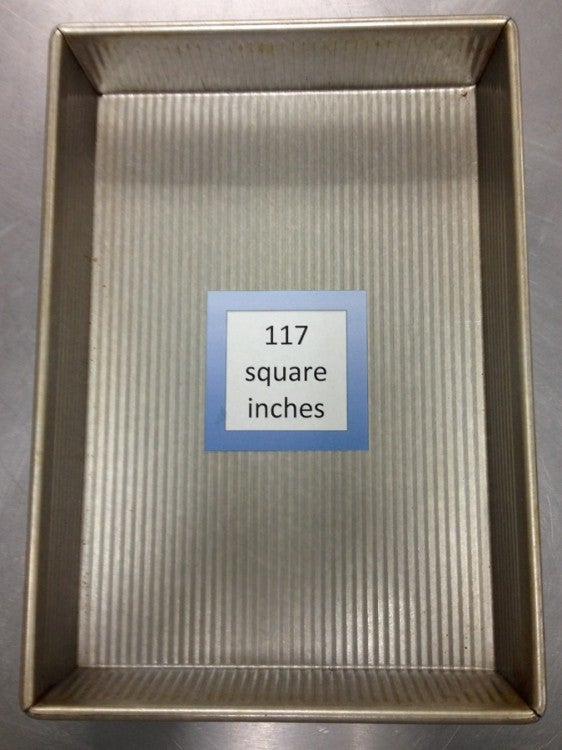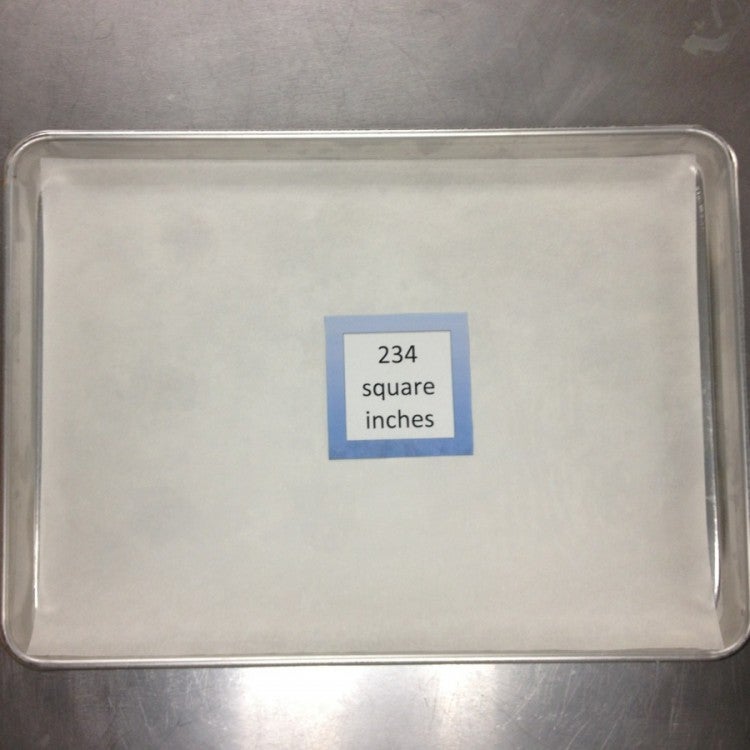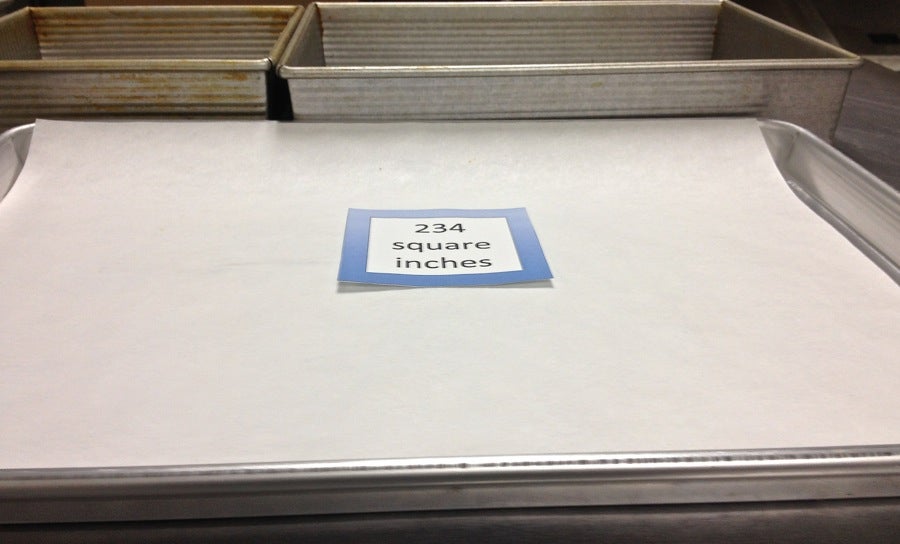


OK, we're going to talk about math today, and how to make half-sheet pan-sized (13" x 18") batches of your favorite 9" x 13" recipes.
Before you get too freaked out, let's just start with the most correct answer: 1.5.

Back in the day, when I was in high school, my intellectual bent had way more to do with artistic seethings than anything mathematical. It wasn't until culinary school (that OTHER CIA, in Hyde Park, NY) that math made any sense to me.
There's plenty of math in baking. I use conversion factors more than anything else. Say you have a cookie recipe that makes 3 dozen cookies, but you need more cookies than that. Double everything, and you've multiplied all the ingredients by a conversion factor of 2. Simple.
Or, you're a small household, and really don't want to stare down a 9" x 13" pan of brownies for two weeks. You can cut the recipe in half, and bake it in an 8" square pan. The conversion factor there is .5. How did I know what size pan to bake in? I compared the bottom surface area of the pans involved. Take a look:
8" square pan on the left, 9" square pan on the right.

The 8" square pan has 79% of the area of the 9" square pan, and slightly more than half the area of the 9" x 13" pan.

As long as you're staying within 10% of the area the recipe was designed for, you can move back and forth between them. Now for the exception to what I just told you.

It would seem like a no-brainer that doubling a 9" x 13" recipe would be perfect in a 13" x 18" half-sheet pan. After all, 117 x 2 = 234 exactly. All the beauty and perfection that is mathematics says it should work, but there's one hitch.
The sides of the pan. All the other conversions we spoke of involve pans whose sides are at least 2" tall. The sides of a half-sheet pan are only 1" tall. At this point, it's time to introduce a third dimension (height) to our calculations, and that means we're talking about the recipe's volume, not just the area of the pan's bottom.

Leaving a perfectly innocent-looking pan with a double batch of cake in it...
...to perform the slow, hypnotic, lava-like overflow.
Believe you me, I learned this one the hard way – with brownies, which are much more of a volcanic experience. They just keep overflowing... and overflowing... and... The scent of burning chocolate and sugar rolls through the house (or test kitchen), as the shame washes over in waves. You don't want to go there.
Which brings me back to the answer: 1.5. For more portions with the same amount of work, remember one and a half times any 9" x 13" recipe will give you a half-sheet pan's worth of product. If you're baking for a church supper, a bake sale, a big family gathering, or your local firehouse, it's a very handy thing to know.
Some suggestions to get you started: Old-Fashioned Apple Cake, our favorite Brownies; or some Sticky Ginger Squares (great for holiday giving).
Cover photo by Liz Neily





